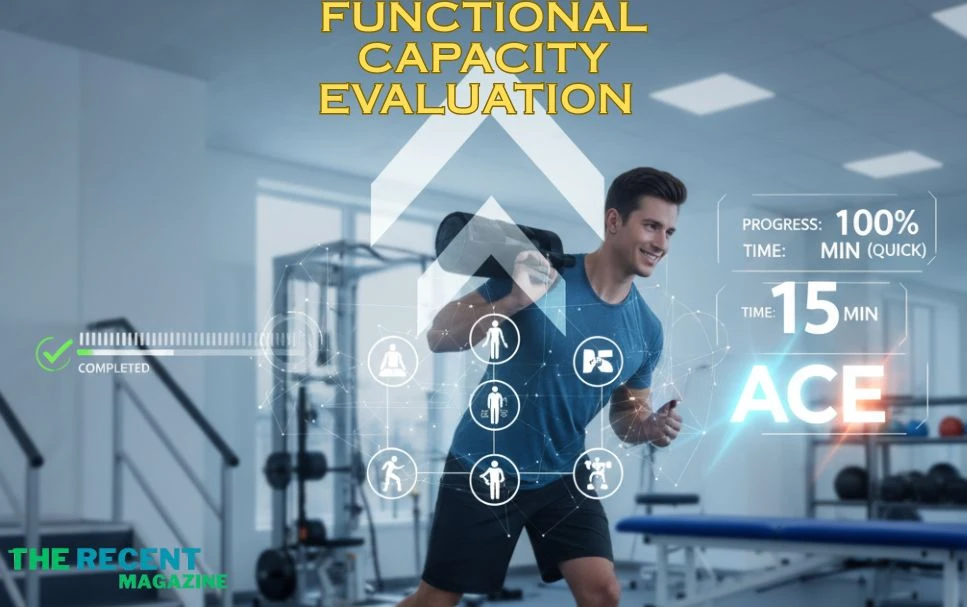Now Reading: Fce: Ultimate Tips to Ace Your Exam Quickly
-
01
Fce: Ultimate Tips to Ace Your Exam Quickly
Fce: Ultimate Tips to Ace Your Exam Quickly

If you’ve ever faced an injury or illness that affects your ability to work, you might have heard about an FCE a Functional Capacity Evaluation. But what exactly is it, and why could it be crucial for your recovery and return to work?
An FCE is more than just a test; it’s a clear, objective way to measure what your body can safely do after a setback. Whether you’re trying to understand your physical limits, planning your comeback, or navigating disability claims, knowing about the FCE can empower you to take control of your journey.
Keep reading to discover how an FCE works, what to expect, and why it matters for your health and career.
Fce Basics
FCEmeans Functional Capacity Evaluation. It measures a person’s ability to do work tasksafter injury or illness. The test includes an interview, physical tests, and task simulations like lifting or carrying. Pain and fatigue are also checked during the process.
The evaluation is done by a qualified therapist. They gather information about medical and work history first. Then, they test strength, movement, and flexibility. Tasks similar to the person’s job are performed to see what they can handle.
Read More : therecentmagazine
Key Fce Elements
Medical and Work Historyincludes details about past illnesses and jobs done. This helps understand the person’s health and work demands.
Physical Examination Detailscheck strength, movement, and flexibility. It shows how well the body works after injury.
Functional Task Simulationinvolves doing tasks like lifting, carrying, or pushing. These tasks mimic real work activities to see what the person can do.
Pain and Fatigue Monitoringtracks how pain and tiredness change during tasks. This helps find limits and what tasks cause strain.
Reasons To Take An Fce
Return-to-Work Assessmenthelps decide if a person can safely resume their job. It measures strength, endurance, and ability to perform work tasks. This ensures the worker returns without risking more injury.
Supporting Disability Claimsprovides clear proof of physical limits. The detailed report helps insurance companies and employers understand what work a person can do. It also supports fair decisions for benefits.
Guiding Vocational Retrainingshows what tasks a person can handle. It helps plan new job training or changes at work. This support makes the transition smoother and fits the person’s current abilities.
Fce Process
Referral and Preparation:A healthcare provider or employer refers the person for evaluation. The evaluator reviews medical records and job demands. The person gets instructions on what to expect and how to prepare for the tests.
Conducting the Evaluation:The evaluator asks about pain, history, and work tasks. Physical tests measure strength, flexibility, and endurance. Simulated tasks mimic real job duties like lifting or carrying. Observations help understand the person’s abilities and limits.
Report Creation and Sharing:Results are documented clearly and simply. The report shows what work tasks the person can safely do. It includes recommendations for return to work or needed accommodations. This report is shared with doctors, employers, and sometimes insurers.
After The Fce
Analyzing resultsafter the FCE helps understand physical strengths and limits. The report shows if the person can do specific tasks safely. It highlights areas needing improvement or caution. Doctors and therapists use this to plan next steps.
Decision makingdepends on clear facts from the FCE. It guides whether a person can return to work full-time or part-time. Sometimes, certain duties must be avoided or adjusted. This helps protect health and prevent re-injury.
Workplace accommodationsmay be needed based on FCE findings. These can include lighter duties, special tools, or more breaks. The goal is to support the worker while keeping the workplace safe. Employers and health professionals often work together to make these changes.

Common Conditions For Fce
Musculoskeletal issuesoften include back pain, joint stiffness, and muscle weakness. These problems affect a person’s ability to lift, carry, or move objects safely. An FCE helps measure how much weight a person can handle and how long they can perform physical tasks without injury.
Balance and movement disordersmay cause dizziness, poor coordination, or difficulty walking. These conditions can increase the risk of falls and injuries at work. Through specific tests, an FCE evaluates balance, walking ability, and the risk of losing stability during daily activities.
| Condition | Common Symptoms | FCE Focus |
|---|---|---|
| Musculoskeletal Issues | Back pain, joint stiffness, muscle weakness | Strength, endurance, safe lifting capacity |
| Balance and Movement Disorders | Dizziness, poor coordination, walking difficulty | Balance tests, movement control, fall risk |
Tips To Ace Your Fce
Physical preparationhelps the body stay strong and ready. Get enough sleepbefore the test. Eat healthy foods and drink water. Light exercise can improve your energy and focus.
Mental readinessis key. Stay calm and confident. Practice deep breathing if you feel nervous. Visualize yourself doing well. Remember, mistakes happen. Keep going.
Understanding the tasksmeans knowing what each part of the FCE requires. Read instructions carefully. Practice similar tasks at home or with a coach. Ask questions if something is unclear.
Frequently Asked Questions
What Does Fce Mean?
FCE stands for Functional Capacity Evaluation. It measures a person’s physical ability to perform work tasks after injury. A therapist conducts tests, interviews, and simulates job activities. Results help decide return-to-work readiness, accommodations, or disability claims.
Does Fce Determine Disability?
An FCE assesses physical abilities to perform work tasks but does not solely determine disability. It supports disability claims decisions.
Is Fce A C1 Or B2?
The FCE (First Certificate in English) corresponds to the B2 level on the Common European Framework. It does not equal C1.
Why Would A Doctor Order A Fce?
A doctor orders an FCE to assess a patient’s physical ability to perform work tasks safely. It guides return-to-work decisions, disability claims, and job modifications after injury or illness.
Conclusion
An FCE helps understand a person’s physical abilities clearly. It shows what tasks they can do safely at work. This evaluation supports better decisions about returning to jobs or changing duties. Knowing the results helps workers, doctors, and employers plan next steps wisely.
Taking an FCE can ease worries about work after injury. It provides honest, useful information for everyone involved.






















